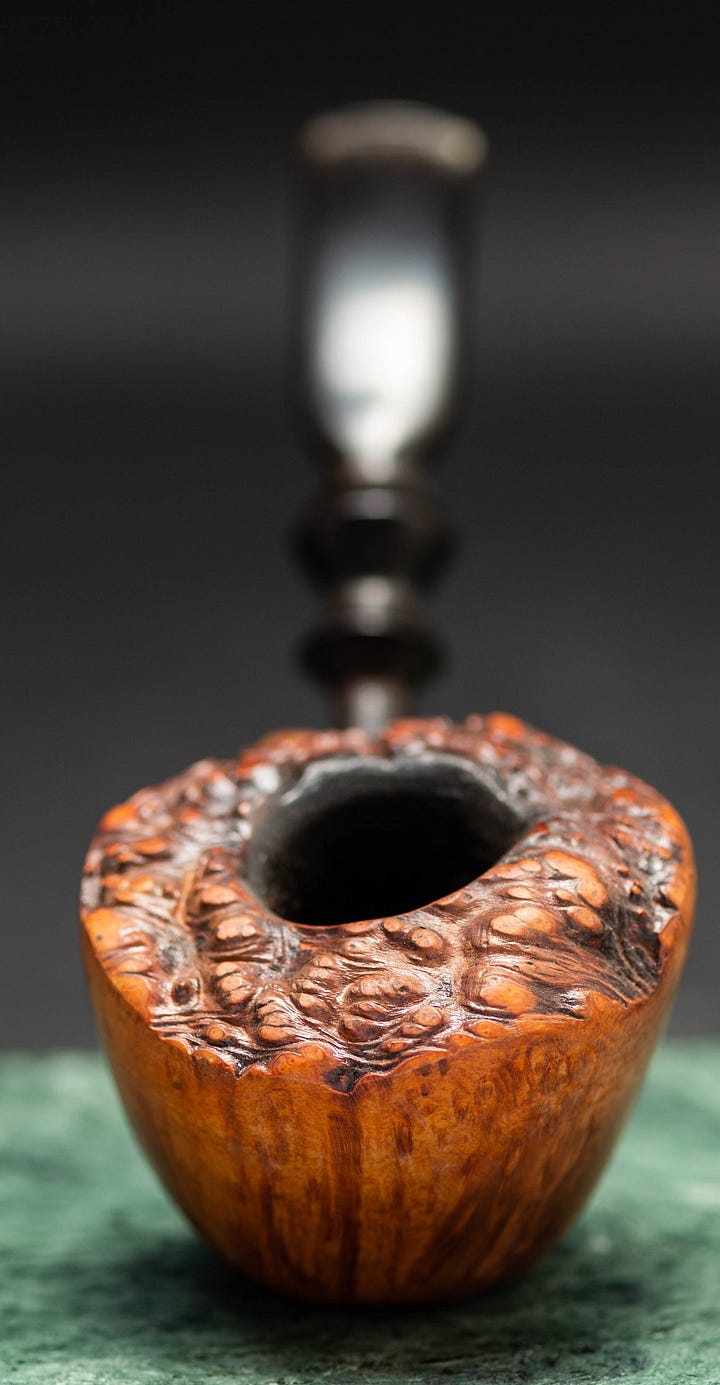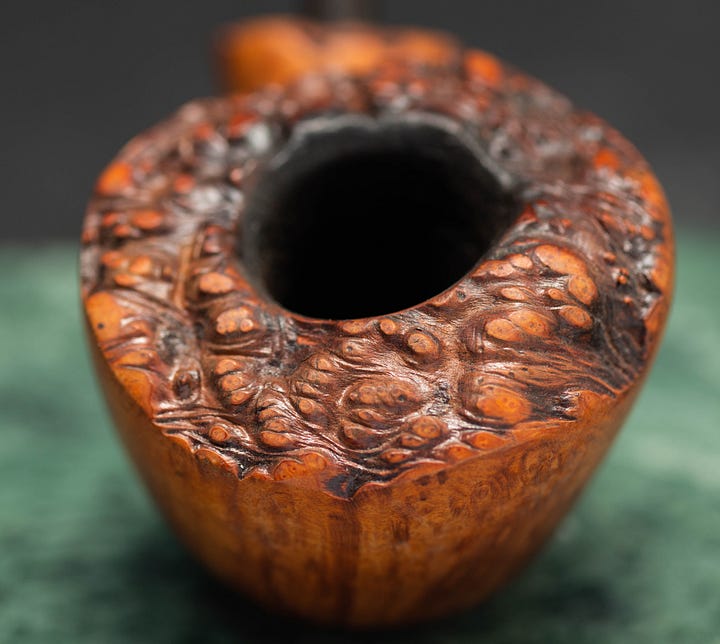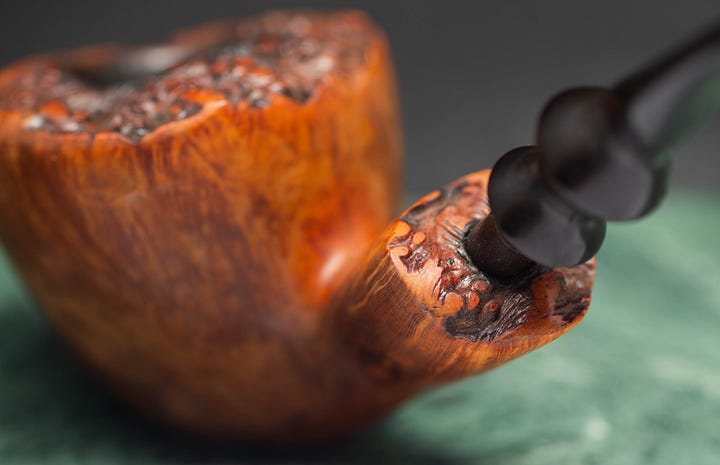In my previous post…
Suck On This!
This pipe, came from an estate auction that I shot almost two years ago. While I was happy with the shot, I would like to have the opportunity to shoot another large lot of estate pipes again, I would change a few things.
I showed a couple of pipes that I had shot about two years ago. I was so enthralled by the pipes that I had shot (and boy howdy! There were some beautiful pipes in the collection) that I bought two of the pipes from the estate. Since then, I have purchased around 25 more pipes, including 8 or 9 that have just recently come in - I am hoping to have pictures of those pipes by the weekend.
I had also mentioned in the post above, that I would have liked to re-shoot them, or at least get a chance to shoot another good-sized collection in the future. Well, here are a couple of my own pipes that I have shot in the studio, and I will tell you why I like these pictures better than my first attempts at shooting pipes.
I got this pipe at auction. It is a Royal Comoy, model 601, “Sitter” pipe. It’s called a sitter pipe, because you can set it down and the bottom keeps it upright. This pipe was made in England, in the late 1960’s (I think). Most “traditional” pipes are made from briar wood, which is the knotted ball of roots that can be found in certain species of trees, usually found in the Mediterranean. The most sought after briar wood comes from Italy.
For pipe smokers, the pipe is not only functional, they are also looked upon as works of art. The beauty of the grain is a highly coveted element of the pipe. Here, and in the shot above, you can see the grain is highlighted by keeping the entire pipe highly polished. This would be called a smooth finish, and smooth finishes are used for wood that has really good grain.
If the grain is perhaps not the best, but the briar wood for the pipe is otherwise fine, then a process known as, “sandblasting” is used to add texture to the outside of the pipe. There is another finish called “rusticated”, but I’ll save that style for a different post.
In this shot, you can see my Savinelli, Hercules. Savinelli makes this exact same pipe with either a smooth finish, or a textured finish like this. This, is one of my favorite pipes. Hell, they are ALL my favorites!
These pipes of mine, that you have seen here, are examples of what’s known as “production” pipe-making. There are custom pipe makers that make custom pipes, and those can go for really big-money, depending on the reputation of the pipe-maker. Custom pipes can have a combination of smooth, and textured, elements on the body.
Here, you see a pipe that was carved, “freehand”. The term freehand, can cover just about any method of carving, from a literal whittling with a knife, to using power tools, the “freehand” describes something that is not based on an existing pattern - in other words, not a production pipe.




You can see the nice straight grain in the wood, which is prized by both pipe-makers and pipe-smokers, as well as “bumps” on the top of the rim. I am not sure what these bumps are called, but the represent the ends of the grain in the burl of the briar wood. If you were to shave the tops from these bumps, and polish the wood, you would see what’s known as a “Birdseye” pattern of little black dots.
This freehand pipe was made by Bjarne Nielsen. I wish that I would have known then what I know now, I would have bought this pipe as well, it sold for less than $50!
Now, I said all of the above as a set-up for the reason for this posting: to talk about how I would have liked to shoot the first batch of pipes.
If you look at both my Comoy and my Savinelli pipes, you will notice that I have more light illuminating the pipes, as opposed to the first batch of pipes, which are darker, and moodier.
Also, I used different props to stage the pipes. In my first series, I used the green marble almost exclusively. It’s not that I didn’t like the marble, but my lighting technique has evolved, I now use props like the wooden duck, and the pick-axe head, to provide elevation for my subject. Elevating the subject allows for me to bounce light up from below the object, filling in shadows, and better highlighting details. I also have learned to appreciate the juxtapositioning of the different textures in the same shot.
While I still have the Axe-head, I no longer have the duck. When I shoot my newest additions to my pipe collection, I’ll need to look around for something else to use as a prop… could be fun!









You can need a consultant on the next Sherlock Holmes reboot.
.
.. a cryin shame you lost the decoy ..
as kids we made acorn & corncob pipes..
part n parcel of ‘playin with matches eh ! 🦎🏴☠️